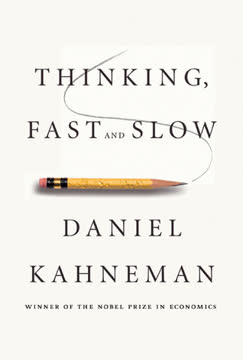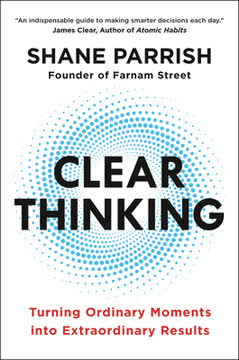Key Takeaways
1. Preparation is Paramount: Know Your Wants and Theirs
Before you pick up the phone or enter a conversation involving negotiation, make sure that you have all the relevant detail and understand it thoroughly so you can execute.
Self-Awareness and Clarity. Successful negotiation begins with a deep understanding of your own objectives, boundaries, and non-negotiables. Define your ideal outcome, acceptable terms, and walk-away point before engaging in any discussion. This clarity provides a roadmap and prevents you from being swayed by pressure or emotion.
Empathy and Perspective-Taking. Equally important is understanding the other party's motivations, needs, and constraints. Put yourself in their shoes to anticipate their positions and identify potential areas of mutual benefit. This empathetic approach fosters trust and collaboration, leading to more innovative and sustainable agreements.
Due Diligence and Market Research. Arm yourself with relevant data, industry benchmarks, and competitor information. Knowing the appropriate price range, market trends, and potential red flags empowers you to negotiate from a position of strength and make informed decisions. This also includes understanding the context of the negotiation, such as time constraints, reputational factors, and the presence of other decision-makers.
2. Stamina and Mental Fortitude: The Negotiator's Backbone
Stamina is about having grit when the chips are down and the doors are staying closed.
Resilience and Perseverance. Negotiation is not always a smooth process; it requires stamina, mental toughness, and the ability to bounce back from setbacks. Cultivate a mindset that embraces challenges, learns from mistakes, and persists in the face of adversity. This involves maintaining a positive attitude, managing emotions, and staying focused on your goals.
Mindset and Visualization. Develop a strong belief in your ability to achieve a successful outcome. Visualize the negotiation process, anticipate potential obstacles, and mentally rehearse your responses. This mental preparation builds confidence and reduces anxiety, allowing you to perform at your best under pressure.
Self-Care and Well-being. Stamina is not just about mental toughness; it also requires physical and emotional well-being. Prioritize self-care practices such as eating healthy, exercising regularly, getting enough sleep, and engaging in activities that reduce stress. A healthy body and mind are essential for maintaining focus, clarity, and resilience during demanding negotiations.
3. Communication is Key: Listen, Empathize, and Be Clear
Communication (active listening, listen to understand, speak to be understood).
Active Listening and Empathy. Effective communication is the cornerstone of successful negotiation. Practice active listening by paying attention to both verbal and non-verbal cues, asking clarifying questions, and summarizing key points. Demonstrate empathy by acknowledging the other party's perspective and showing genuine interest in their needs and concerns.
Clarity and Conciseness. Articulate your positions clearly, concisely, and persuasively. Avoid jargon, ambiguity, and emotional language. Use data, evidence, and logical reasoning to support your arguments. Be direct and assertive, but always respectful and professional.
Non-Verbal Communication. Be aware of your own body language and facial expressions, as well as those of the other party. Maintain eye contact, use open and confident posture, and avoid fidgeting or other distracting behaviors. Non-verbal cues can convey confidence, sincerity, and trustworthiness, enhancing your ability to influence the negotiation.
4. Strategies and Tactics: A Toolkit for Success
Strategy without tactics is the slowest route to victory. Tactics without strategy is the noise before defeat.
Integrative vs. Distributive Negotiation. Understand the difference between integrative (win-win) and distributive (win-lose) negotiation styles. Aim for integrative solutions that create value for both parties, but be prepared to use distributive tactics when necessary to protect your interests.
Anchoring and Framing. Use anchoring to subtly influence the other party's perception of value. Frame your proposals in a way that highlights their benefits and minimizes their drawbacks. Be aware of how the other party is framing the negotiation and reframe it to your advantage.
Creating Urgency and Scarcity. Create a sense of urgency by highlighting deadlines, limited availability, or competing offers. Use scarcity tactics to increase the perceived value of your proposals. However, be ethical and avoid using false or misleading information.
5. Power Dynamics: Leveling the Playing Field
Differences help drive deals.
Identifying Power Imbalances. Recognize when the other party has more power, resources, or leverage than you do. This awareness allows you to adjust your strategy and tactics accordingly.
Building Your BATNA. Strengthen your Best Alternative To a Negotiated Agreement (BATNA) by exploring other options and developing contingency plans. A strong BATNA gives you the confidence to walk away from a bad deal and increases your negotiating power.
Leveraging Information and Expertise. Gather as much information as possible about the other party, their needs, and their constraints. Use your expertise and knowledge to create value and influence the negotiation. Highlight your unique strengths and how they can benefit the other party.
6. 21st Century Negotiation: Adapting to the Digital Age
We will make it because we are young and we never, never give up.
Social Media and Online Tools. Utilize social media platforms like LinkedIn to research potential counterparts, build relationships, and gather information. Leverage online tools for communication, collaboration, and information sharing.
Cybersecurity and Data Protection. Be aware of the risks of data breaches, ransomware attacks, and other cyber threats. Implement security measures to protect your data and be prepared to negotiate with hackers if necessary.
Remote Communication and Virtual Meetings. Master the art of remote communication through video conferencing, email, and instant messaging. Adapt your communication style to the virtual environment and be mindful of non-verbal cues.
7. Real-World Application: Home, Career, and Big Ticket Items
It’s not about waiting; it’s about getting to grips with your own creativity and finding that voice within us that says, ‘I will carry on’, even when you feel like all the roads are blocked.
Home Buying and Selling. Understand the real estate market, assess property values, and negotiate effectively with agents and sellers. Be prepared to walk away from a bad deal and explore alternative options.
Career Advancement and Salary Negotiation. Demonstrate your value to your employer, articulate your career goals, and negotiate for fair compensation and benefits. Be prepared to discuss your accomplishments, skills, and market value.
Big Ticket Items and High-Stakes Deals. Apply the principles of negotiation to high-stakes transactions such as car purchases, business partnerships, and large contracts. Conduct thorough due diligence, seek expert advice, and be prepared to walk away if the terms are not favorable.
8. The Art of the Deal: It's All About the Relationship
The sweetest deals are the ones where you both profit in some way.
Building Trust and Rapport. Negotiation is not just about achieving a specific outcome; it's also about building long-term relationships. Focus on creating a positive and collaborative environment, fostering trust, and demonstrating respect for the other party.
Maintaining Integrity and Ethics. Conduct negotiations with honesty, transparency, and ethical behavior. Avoid deception, manipulation, and aggressive tactics. A reputation for integrity is a valuable asset that will serve you well in the long run.
Finding Win-Win Solutions. Strive for outcomes that benefit both parties and create mutual value. Look for opportunities to expand the pie, address underlying needs, and build sustainable partnerships. Remember that successful negotiation is not about winning at the expense of others; it's about creating a better future for everyone involved.
Last updated:
FAQ
What is The Art of Negotiation: How To Get What You Want by Tim Castle about?
- Comprehensive negotiation guide: The book is a practical manual covering negotiation fundamentals, real-world examples, and advanced tactics for both personal and professional scenarios.
- Emphasis on mindset and stamina: Tim Castle highlights the importance of mental toughness, self-awareness, and perseverance, using case studies of successful negotiators.
- Modern and interactive approach: The book blends classic negotiation principles with 21st-century realities, including digital tools, and offers activities and resources for experiential learning.
Why should I read The Art of Negotiation: How To Get What You Want by Tim Castle?
- Essential life skill: Negotiation is a critical skill for everyday life and career advancement, impacting relationships, wealth, and business success.
- Actionable strategies and real examples: The book combines theory with Tim Castle’s personal experiences and practical advice, making it accessible and immediately useful.
- Focus on integrity and relationships: Castle teaches negotiation as a tool for building trust and long-term value, not just winning at all costs.
What are the key takeaways from The Art of Negotiation: How To Get What You Want by Tim Castle?
- Power of silence and listening: Silence is a strategic tool for controlling negotiations and encouraging the other party to reveal information.
- Preparation and BATNA: Success hinges on thorough preparation, understanding your Best Alternative to a Negotiated Agreement, and anticipating the other side’s moves.
- Trust, humor, and authenticity: Building trust, using humor to ease tension, and negotiating with honesty lead to better, more sustainable outcomes.
What are the main negotiation concepts explained in The Art of Negotiation: How To Get What You Want by Tim Castle?
- Distributive vs. integrative negotiation: Distributive is competitive and short-term, while integrative focuses on cooperation, problem-solving, and long-term relationships.
- Seven Elements of Effective Negotiation: Interests, Legitimacy, Relationships, Alternatives, Options, Commitments, and Communication form the core framework.
- Phases of negotiation: The process includes Preparation, Exchange of Information, Bargaining, and Closing, with emphasis on thorough preparation and follow-up.
How does Tim Castle define negotiation in The Art of Negotiation: How To Get What You Want?
- Beneficial agreement process: Negotiation is described as reaching agreements that nourish long-term relationships, wealth, and business.
- Interpersonal decision-making: Castle references negotiation as a necessary process when objectives can’t be achieved alone, emphasizing collaboration.
- Mutual benefit focus: The goal is to create value for all parties, moving beyond transactional exchanges to integrative, win-win solutions.
What preparation advice does Tim Castle offer in The Art of Negotiation: How To Get What You Want?
- Research and self-awareness: Spend time understanding the other party, their style, and your own goals, non-negotiables, and alternatives.
- Identify negotiation type: Tailor your strategy based on whether it’s a one-issue, multi-issue, or time-based negotiation.
- Team alignment: Ensure your negotiating team is unified and clear on roles to avoid internal conflict or sabotage.
What is BATNA and why is it important according to The Art of Negotiation: How To Get What You Want by Tim Castle?
- Definition and origin: BATNA stands for Best Alternative to a Negotiated Agreement, a fallback plan if negotiations fail, originating from Fisher and Ury’s Getting to Yes.
- Source of negotiation power: A strong BATNA gives you leverage and confidence, reducing pressure to accept poor terms.
- Preparation necessity: Knowing your BATNA and estimating the other party’s alternatives is crucial for effective negotiation planning.
How does Tim Castle recommend handling emotions like anxiety and anger in negotiation?
- Recognize emotional triggers: Anxiety often arises before and early in negotiations, while anger can surface during bargaining.
- Manage destructive emotions: Anger can damage trust and relationships, while anxiety leads to weaker offers; both must be managed for success.
- Use calming techniques: Deep breathing, pausing, and maintaining a positive mindset help control emotions and improve negotiation outcomes.
What role does non-verbal communication play in negotiation according to The Art of Negotiation: How To Get What You Want by Tim Castle?
- Powerful non-verbal cues: Body language, facial expressions, and micro-expressions reveal true emotions and can influence negotiation results.
- Power posing benefits: Adopting confident postures increases presence, reduces stress, and boosts risk tolerance.
- Self-awareness tools: Techniques like the Johari Window help negotiators understand how they are perceived and improve team dynamics.
How does Tim Castle explain the use of silence in negotiation in The Art of Negotiation: How To Get What You Want?
- Silence as a control tool: Silence helps control the pace and emotional tone, giving you time to think and prompting the other party to share more.
- Avoid premature agreement: Filling silences with quick responses or justifications can weaken your position and signal agreement too soon.
- Team coordination: In pair negotiations, pre-negotiation syncing ensures silence is used strategically without accidental interruptions.
What strategies and tactics for successful negotiation does Tim Castle share in The Art of Negotiation: How To Get What You Want?
- Negotiate the negotiation: Start by agreeing on the negotiation process itself, setting expectations and reducing tension.
- Build trust and disclose early: Show trust first and be upfront about your interests to foster openness and sometimes speed up deals.
- Create urgency and leverage BATNA: Use urgency to move negotiations forward and rely on your BATNA for confidence and power.
How can I apply Tim Castle’s advice from The Art of Negotiation: How To Get What You Want to salary and big-ticket item negotiations?
- Salary negotiation: Define your ideal, acceptable, and no-go salary figures, present all desired elements upfront, and maintain rapport and flexibility.
- Big-ticket items: Break negotiations into steps, research market conditions, and use alternatives to strengthen your position.
- Emotional management: Set clear budgets, understand motivations, and build genuine relationships to avoid overspending and secure better deals.
Review Summary
The Art of Negotiation receives mixed reviews, with an average rating of 3.77/5. Readers appreciate its practical tips and general concepts for improving negotiation skills. Some find it motivational and confidence-boosting, while others consider it straightforward but not groundbreaking. The book is praised for its comprehensive coverage of negotiation techniques, from everyday situations to corporate deals. However, some readers find the content dry and slow-paced. Overall, it's considered a useful resource for those looking to enhance their negotiation abilities, though opinions vary on its engagement and depth.
Similar Books










Download PDF
Download EPUB
.epub digital book format is ideal for reading ebooks on phones, tablets, and e-readers.




